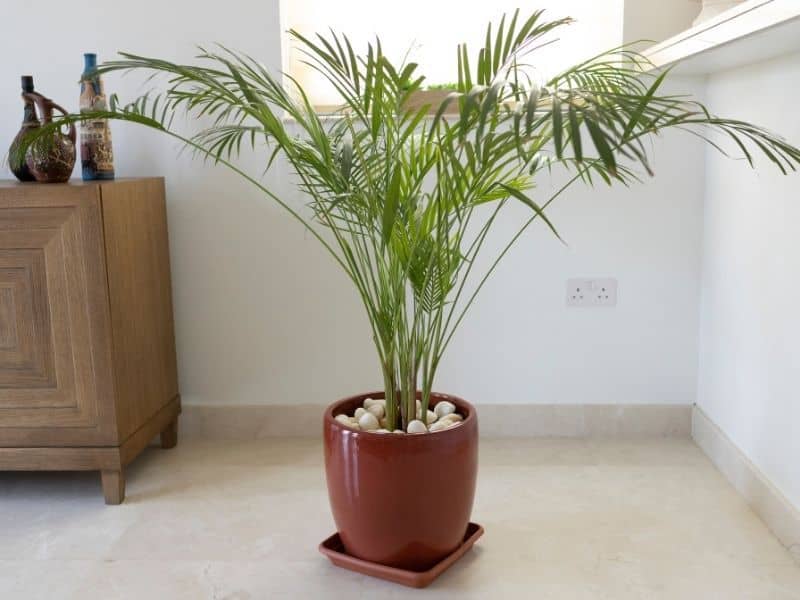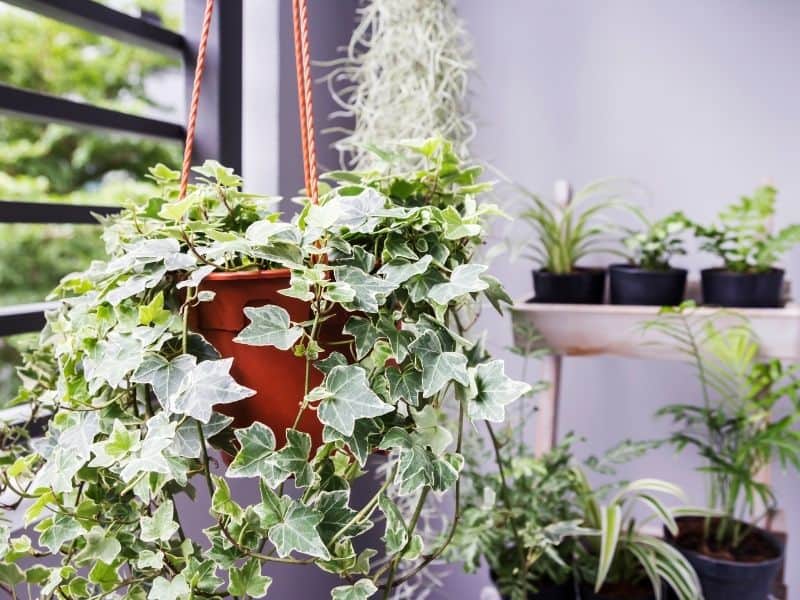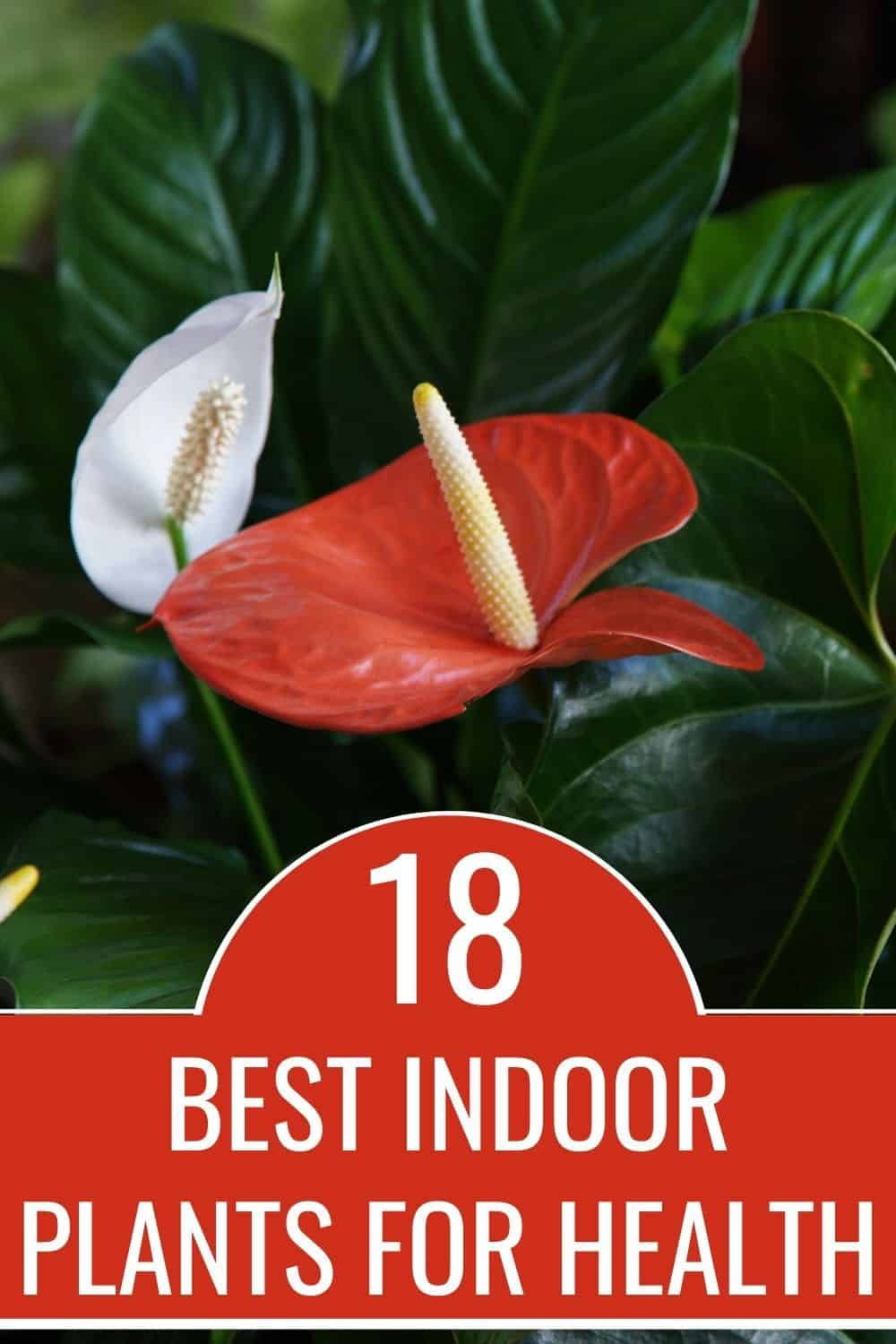Indoor plants aren’t just great for looking at. They can also serve a great function like improving the quality of air within your home. Plants add oxygen to your space, improving the air quality. Another great health benefit to indoor plants is that they can help reduce stress and anxiety. People who garden or keep indoor plants have been shown to have less stress or better ways of channeling their stress into nurturing their plants.
I bet you never realized how much your plants were helping you with your health, did you? If you’re new to indoor plants or just looking for some more healthy plants to add to your collection, I’ve compiled a list of my favorites. Here are some of the best indoor plants for health based on how they benefit the environment and also how easy they are to care for.

Best Indoor Plants for Health
There are many species of plants that can help you improve your health. One of the biggest ways they do this is by purifying or filtering the air. There was a very famous study by NASA that is referenced time and time again because it proves how plants filter pollutants from our air. This is explained below.
Here are some additional ways that plants help our overall health and well-being:
- They help reduce stress – a study published in the Journal of Physiological Anthropology showed that plants in the home or office could help people feel more comfortable and soothed. They simulate a more natural environment, which helps reduce stress. The act of working with plants and caring for them can also reduce stress.
- Caring for plants is therapeutic – As mentioned above, the act of nurturing and caring for plants can be therapeutic for many people. It can help improve feelings of anxiety, depression, and dementia, as a few examples. Horticultural therapy has been around for many centuries but is re-finding itself among modern medicine.
- Plants can help improve attention – In a small study involving 23 participants, it was found that people who studied with real plants in the classroom performed better than those who had no plants at all, or fake plants in the classroom. This is just one small study but others have indicated similar findings of plants improving attention span and concentration. Maybe it’s all that nice oxygen they’re releasing for us?
- Plants can help you recover faster from illness – A 2002 review of the research shows us that people who were recovering from surgeries needed less pain medicine and had shorter stays at the hospital when they were exposed to plants and greenery during their recuperation, vs those who were not.
- Plants in the work environment can improve your overall outlook – In general, plants just make us happier. Researchers interviewed more than 440 Amazon employees in the US and India and found that those who had plants in their work environment reporter greater job satisfaction than those who did not.
Types of Indoor Air Pollution that Plants Can Filter
A clean air study from the National Aeronautics and Space Administration (NASA) found that certain plants are capable of filtering pollutants such as carbon monoxide, ammonia, benzene, and more.
The study explains how the process works as follows: “Plant roots and their associated microorganisms then destroy the pathogenic viruses, bacteria, and the organic chemicals, eventually converting all of these air pollutants into new plant tissue. It is believed that the decayed radon products would be taken up the plant roots and retained in the plant tissue.”
Here is a list of the pollutants these plants can help purify:
- Benzene – Commonly found in varnishes, detergents, rubber, paints, plastics, inks, oils, detergents, dyes, gasoline, and floor finishes within and around the home.
- Formaldehyde – Commonly found in paper towels, facial tissues, tobacco smoke, gas stoves, adhesive binders in floor coverings, carpet backing, and grocery bags.
- Trichloroethylene – Commonly found in printing inks, varnishes, adhesives, and lacquer which may be used in or around the home.
- Toluene – Commonly found in stain removers, oils, paints, paint thinner, paintbrush cleaner, nail polish, and inks that you might use in the home.
- Carbon monoxide – Commonly found in vehicles, fireplaces, stoves, and furnace fumes.
- Ammonia – Commonly found in cleaning products, furniture polish, drain cleaners, and more.
- Styrene – Commonly found in carpet backing, fiberglass, packaging, home insulation, wiring insulation, and drinking cups that you may use in your household.
Now let’s look at some of the best plants to help you clean that air you breathe inside your home or office.
1. Snake plant (Dracaena trifasciata)

The snake plant is fun, interesting, and easy to care for. The fact that it helps purify the air is just one more bonus. They work in all different types of lighting situations, so you can put them just about anywhere in your home, even in bathrooms or a dark bedroom. Sleep soundly knowing your snake plant is cleaning the air for you. (see more indoor plants ideas here)
2. Areca palm (Dypsis lutescens)
Areca palms are native to Madagascar and they can help you bring a tropical vibe to any space, but they also clean the air and can release moisture, and act as a natural humidifier. This beautiful palm that grows tall when healthy, can help purify toxins like toluene, xylene, and formaldehyde.
3. Spider plant (Chlorophytum comosum)

Spider plants are great for the air and they are also pet friendly. This makes them a huge fan of indoor plant collectors who also have small children or animals. You can use them in a pot or in hanging baskets and they will help filter carbon monoxide, styrene, xylene, benzene, toluene, and formaldehyde from your indoor air.
4. Money tree (Pachira aquatica)
The money tree (also called money plant or water chestnut) made the list because it helps clear the air of pollutants like benzene, formaldehyde, xylene, and toluene. It prefers indirect light so it’s a nice choice for a shady spot. However, it is toxic to pets and people so be careful if you have small children or animals in the home. They are also believed to be good luck or to attract wealth.
5. Golden pothos (Epipremnum aureum)
The golden pothos is a beautiful, low-maintenance plant that does well in low lighting and also helps to purify the air. They grow nice and long vines and because they are so pretty and easy to care for, they are a favorite among new houseplant owners. They’re also really easy to propagate so with one healthy pothos, you can grow many more.
6. Gerbera daisy (Gerbera)

Gerbera daisies are great air purifiers, too, but they also make very pretty flowers to look at. For the same reason, people enjoy cut flowers in vases in their homes or office spaces, living flowers can brighten the mood in the space. The thing that makes live flowering plants better than cut flowers is that they don’t die (when cared for properly).
7. Peace lily (Spathiphyllum)
The peace lily is a fun little plant that is not a lily at all. However, it blooms beautiful flowers that resemble lilies while also purifying the air in the room. It’s one of the top plants for breaking down toxic gases in the air and purifying the room. Just keep it away from pets and small children because it is toxic when consumed! Peace lilies are also believed to help promote healthy sleep.
8. Rubber tree (Ficus elastica)
The rubber tree or rubber plant is another that is great for purifying the air, but the health benefits don’t stop there. It is also supposed to help with the reduction of allergies, is a natural anti-inflammatory, a natural analgesic, and promotes stomach health. The young leaves are often eaten as a vegetable. However, the sap of the plant can cause skin irritation or stomach problems so keep away from pets and kids.
9. Bamboo palm (Chamaedorea seifrizii)

Bamboo palms look great in any space, they work to help purify the air like all of the other plants on this list, but they can also help prevent spider mites, making them good for you and for the health of your other plants as well. Bamboo palms are a good choice for improving mood. They bring a tropical feel to your home and they are also very easy to care for.
10. Boston fern (Nephrolepis exaltata)

The Boston fern is another plant that will purify the air of toxins, especially formaldehyde, but it can also improve humidity levels. This is good for everyone, but especially for people with certain skin conditions like dermatitis, but also helps soothe dry noses and sore throats.
The only downside to the Boston fern is that many houseplant owners find them to be finicky. All of my houseplant groups are full of people equally divided between “love” and “hate” for the Boston fern. If you’re going to choose a fern, take some time to learn how to care for them properly. Don’t try to just “wing it”.
11. Aloe vera (Aloe barbadensis miller)

Another medicinal plant with more than one purpose, the aloe vera plant looks great, is easy to care for, and also purifies your home. Not to mention the fact that you have a great soothing remedy for burns and scrapes at your disposal, too. Aloe vera is known to filter toxins like carbon monoxide, formaldehyde, and benzene.
12. Philodendron (Philodendron)
Philodendrons look very similar to pothos but the shapes of the leaves are different. They are very efficient at clearing toxins from the air and improving indoor air quality. However, you may not know that they are also good at inducing feelings of calm, trapping dust from your home, and helping you feel more alert. The beautiful shades of green that they come in will also help you attach to the mood and feelings of health.
13. Pineapple plant (Ananas comosus)

According to research, sleeping with a pineapple plant in the room can help to reduce snoring so that people who snore (and their partners) can get a better night’s sleep. They are another purifying plant, so they remove most of the same toxins as other plants on our list, but NASA specifically found in their study that this plant helps produce more oxygen.
14. Weeping fig (Ficus)

The weeping fig, a type of ficus, is another plant from the NASA list of plants that help purify the air we breathe. They can help improve the air quality in your home and reduce your chances of getting sick. Some people also find that they help give more clarity and creativity and can help you if you suffer from “brain fog” or short-term memory issues. They grow very slowly and require little care, but you need to be careful because they are toxic to cats and dogs.
15. Dracaena (Dracaena)
Dracaena are excellent air purifiers; one of the top of the list. It helps remove formaldehyde, benzene, trichloroethylene, and carbon dioxide. They can help purify chemicals that are linked to headaches, respiratory problems, anemia, marrow disease, kidney disease, and more. They’ve also been reported to help with concentration and cognitive function. They will help increase the humidity levels in the home. They’re also low maintenance and look great, making them great for mood-boosting in your space.
16. English ivy (Hedera helix)

While it’s considered an invasive species outdoors, English Ivy can serve a great purpose inside the home. It is a very good air-purifying plant. It also has medicinal purposes such as reducing swelling, preventing intoxication, and helping ease the symptoms of asthma. But chances are, you want your English ivy to help the room look better, not to eat it or drink it in a tea. It also helps remove mold from your home.
17. Flamingo lily/ fleur (Anthurium andraeanum)

Flamingo Lilies have such a unique look to them with their bright green, waxy-looking leaves and bright, beautiful flowers, they are sure to brighten any room. But did you know that they are also incredibly effective at removing airborne formaldehyde, ammonia, toluene, and xylene in your home or office? They are toxic when eaten. Use caution around pets and children.
18. Parlor palm (Chamaedorea elegans)
Last up on the last is another palm. Not only is the parlor palm great for indoor air quality, but it also just looks amazing in the room too! They purify the room, the same as other plants on this list, but they are particularly good at removing gases that may come off certain furniture materials.
Conclusion of best indoor plants for health
Now that you have this great list of 18 indoor plants for health, you can start bringing home some new plant babies and not even feel guilty about it. Did you already have some of these plants in your home? Some of them are so common that people have them without realizing how good they are for your health. That’s a win-win!











22 Best Indoor Plants For Bedroom And Sleep
Thursday 13th of May 2021
[…] are also other plants for health that you might consider for your bedroom space as well. Many on these two lists will cross over […]